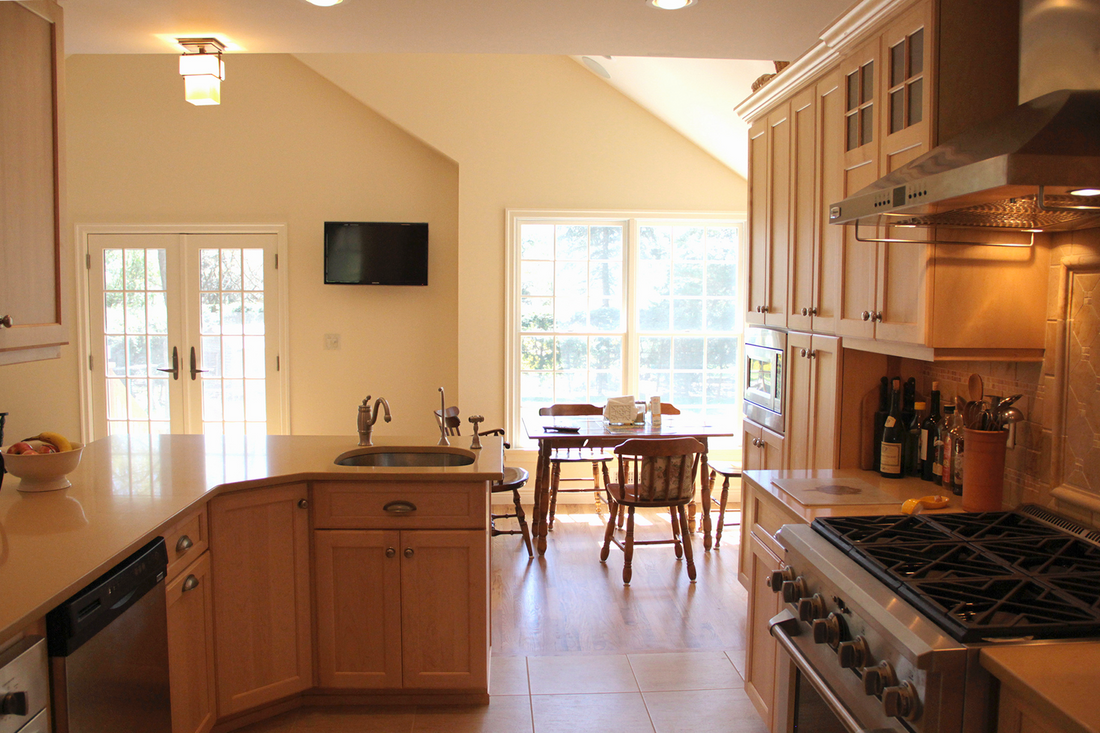As a homeowner, you have a list of things you would like to do to improve your home. We bet that list feels pretty long, and it is daunting to think about tackling all that work at once.
It's much easier to package up those improvements and implement them over time. That's why our recommendation at J. Campoli & Sons is to segment the work and break it up into various stages to perform in sequence. Here's our method below:
Room-by-room
Go through your home, room by room, and make a list of the various improvements you would like to make. What you're doing is creating a list of the different projects that you would need a contractor for. You don't need to think only in specifics, either. Think of different utilities and amenities you would like to have in your home in general. You should be thinking of everything you would like to be able to do in each room of your home.
You should list any annoyances or pain points. Down to the color of the paint, or the finish of the hardware, you should list out each element of your home that needs tweaking. Your home is your place to tailor exactly how you want it, and each item can be corrected.
When the list is complete, you'll be able to see which rooms have the longest list of to-dos. That gives you a general idea of which space you need to give the most attention to. However, before you jump into the work, you must prioritize.
Prioritize
Take your to-do list and prioritize each item as either "need-to-have" or "want-to-have." This will help you put a fine point on your needs and give you direction for how to tackle the work at your home. Combining the necessity of each to-do item along with the amount of to-dos per room puts a really fine point on where you need to perform work immediately, and tells you the other spaces to bite off at later times.
This step is the most important, because it will shape the living experience at your home, and determines which amenities you will be adding earliest, so you can enjoy them the longest.
Sequence
The last thing you want to do with this work is paint yourself into a corner, figuratively or literally. Because construction is very hands-on work, you want to start the work at the farthest parts of your home first.
Logistically, you should complete the work in the back yard before you do anything in the front yard. You should do the work on the second floor before you do work on the first floor. If you were to perform projects in the opposite order, you'd have the construction crew bringing materials and machines through your new front yard to the back, or carting materials upstairs through your newly finished first floor. While it's not the end of the world, it's not ideal for the wear and tear on your home.
This isn't one-size-fits-all advice, but is a very important principle to keep in mind. Obviously, if you have a must-perform renovation on the first floor of your house before a less-necessary project on the second floor, you may need to do things in a different order. In this situation, just know that you will have workers passing through your newly finished space in order to perform the secondary projects. At J. Campoli & Sons, we always dust shield and protect all finished areas of the homes we're working in, so that there is as little disruption as possible to any area of the homes we are entrusted with improving.
Enjoy Your Home
We find that with this method, you can bite off a small project each year, and that really adds up over time! After five years, you can look back and say "wow, look how much we got done on our home," and you will have done it with as little disruption as possible.
If you're looking over your to-do list and feeling overwhelmed, reach out to us here at J. Campoli & Sons. We have implemented thousands of successful residential renovations in Bergen County for three family generations, and have always put our clients' success first. When need to improve your home, we have the know-how and the talent to make it happen. Take a look at our residential construction page to learn more.

